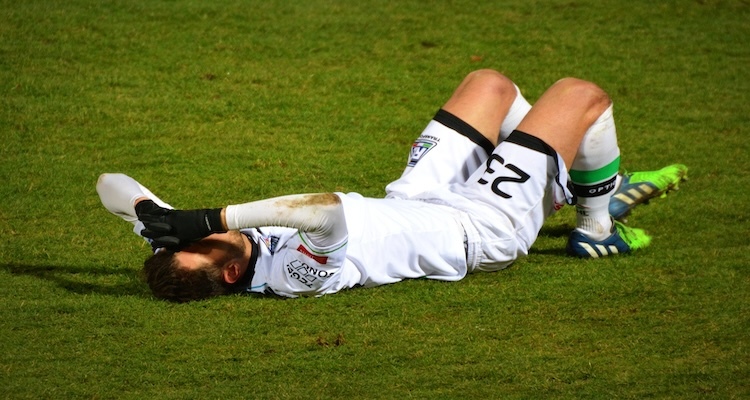
Soccer (football), the beautiful game, is a sport that demands agility, speed, and physical endurance from its players. However, with the intense nature of the game, injuries are an unfortunate reality, and ankle injuries are among the most common. These injuries can range from minor sprains to severe fractures, often sidelining players for extended periods and potentially affecting their careers.
The ankle is a complex joint that connects the leg to the foot. It is comprised of several bones, ligaments, tendons, and muscles that work together to facilitate movement and stability. The ankle joint is formed by the articulation of the tibia, fibula, and talus bones, while the surrounding ligaments, such as the lateral collateral ligaments and the deltoid ligament, provide stability and support.
Soccer players are susceptible to ankle injuries due to the high-impact nature of the sport. These injuries can occur due to various factors, including:
Additionally, certain risk factors can increase the likelihood of sustaining an ankle injury, such as:
These are the most common type of ankle injury in soccer. Sprains occur when the ligaments that support the ankle joint are stretched or torn, often due to excessive inward or outward rolling of the ankle. Sprains can range in severity from mild to severe, with severe sprains potentially involving complete ligament tears.
Fractures can occur when there is a break in one or more of the bones that make up the ankle joint. These injuries are typically the result of high-impact collisions or falls and can range from hairline fractures to more severe, displaced fractures.
This condition involves inflammation of the Achilles tendon, which connects the calf muscles to the heel bone. It is often caused by overuse or repetitive stress on the tendon and can lead to pain, swelling, and stiffness in the back of the ankle.
This injury occurs when there is abnormal rubbing or pinching of soft tissues, such as tendons or bone spurs, within the ankle joint. It can cause pain, swelling, and limited range of motion.
This condition involves inflammation of the peroneal tendons, which run along the outside of the ankle and help stabilize the foot and ankle during movement. It can be caused by overuse or trauma and can lead to pain, swelling, and weakness in the affected area.
The signs and symptoms of ankle injuries can vary depending on the type and severity of the injury. However, some common signs and symptoms include:
It is essential to seek prompt medical attention if you experience any of these symptoms, as they may indicate a more serious injury that requires proper diagnosis and treatment.
Prevention is key when it comes to reducing the risk of ankle injuries in soccer. Here are some strategies that can help, but always consult with a qualified medical professional for appropriate advice:
By implementing these preventive measures, soccer players may reduce their risk of sustaining ankle injuries.
The treatment for ankle injuries will depend on the type and severity of the injury. Here are some common treatment options:
It is crucial to follow the treatment plan prescribed by a healthcare professional to ensure proper healing and minimize the risk of further injury.
Rehabilitation is a crucial component of the recovery process for ankle injuries. A comprehensive rehabilitation program typically may include the following:
It is essential to follow the guidance of a healthcare professional, such as a physiotherapist or athletic trainer, to ensure a safe and effective rehabilitation process.
The decision to return to play after an ankle injury should be made in consultation with a healthcare professional and should be based on several factors, including:
It is crucial to follow a gradual and progressive return-to-play protocol to minimize the risk of re-injury and ensure a safe and successful return to the game.
Even after recovering from an ankle injury, it is essential to take proactive measures to maintain ankle health and prevent future injuries. Here are some tips:
By incorporating these tips into your routine, you can help ensure the long-term health and performance of your ankles in the sport of soccer.
Soccer is a physically demanding sport that puts significant stress on the ankles. By understanding the common causes, types, and risk factors of ankle injuries, players and coaches can take proactive measures to prevent and manage these injuries effectively. Prompt first aid, proper treatment, and a comprehensive rehabilitation program are essential for a successful recovery and safe return to play. Additionally, maintaining ankle health through targeted exercises, appropriate footwear, and protective equipment can help reduce the risk of future injuries and ensure longevity in the sport.
If you're a soccer player or coach looking to prevent or recover from ankle injuries, you should always consult with a sports medicine specialist, such as a physiotherapist. They can provide personalized guidance, develop a tailored rehabilitation program, and help you get back on the field safely and effectively. Don't let ankle injuries sideline your passion for the game – take action today to protect your ankles and continue playing the sport you love. You can find a range of sport injury specialists who list their expertise on our easy-to-use sports directory. Just visit our homepage to find out more!
